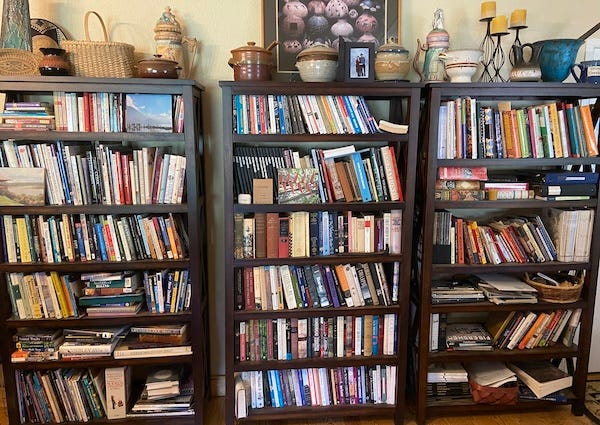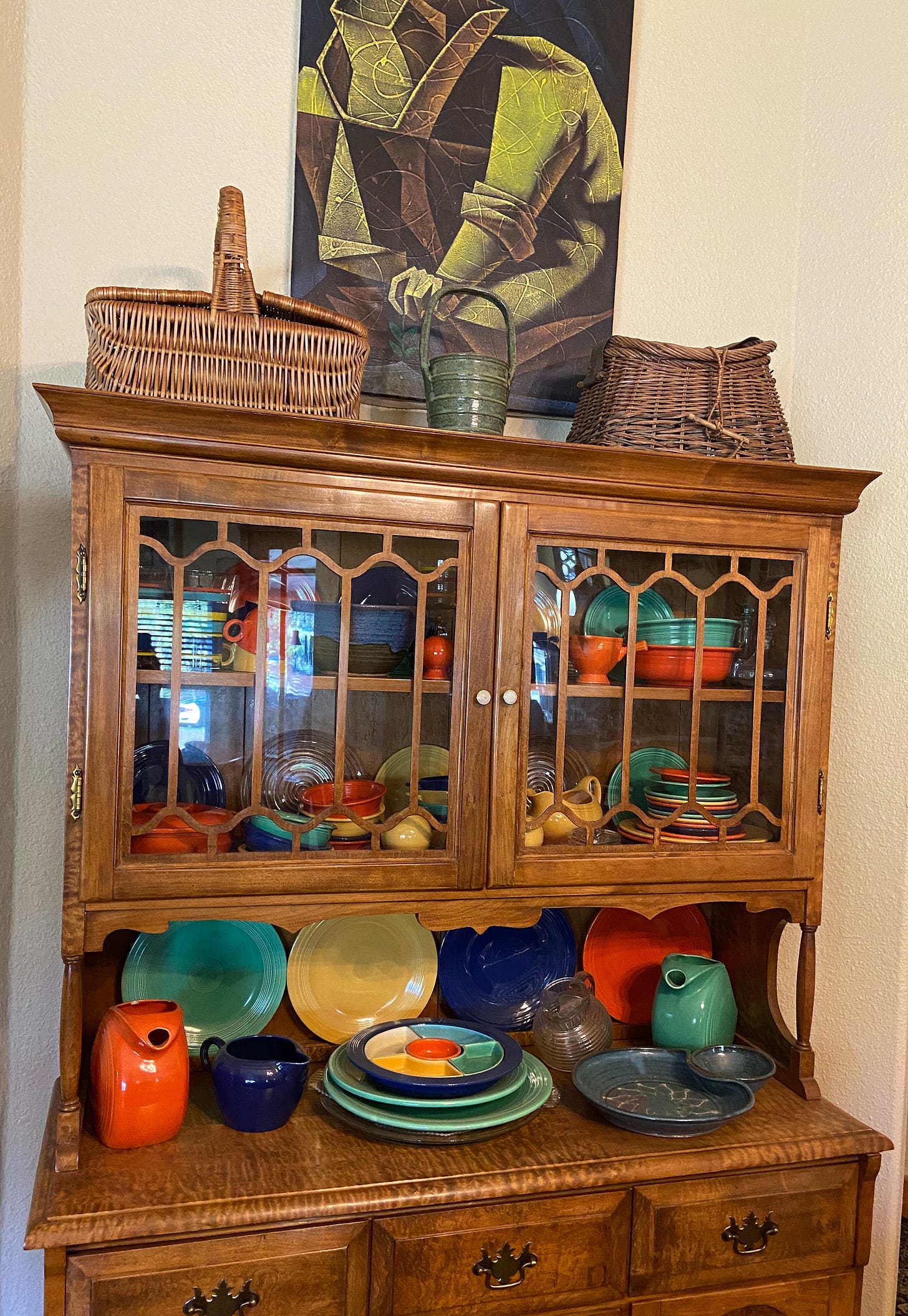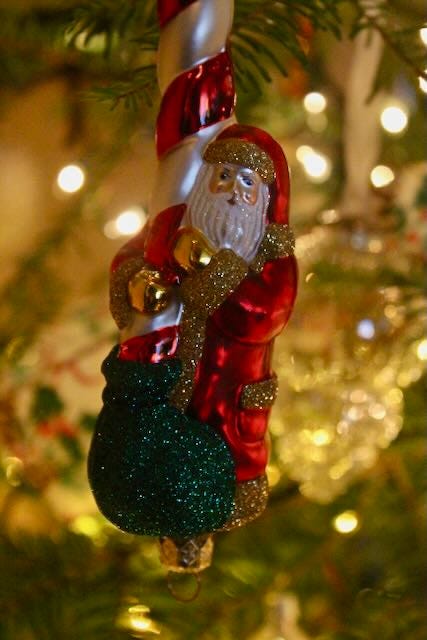In the spring of 1978, I was 19, and I packed my mustard-yellow Datsun Hatchback with my young life’s belongings: one large box of clothes, one smaller box of record albums, one very small box of childhood mementos, a couple of books, and Jessica, my long-haired cat. I was moving to Houston to start my official adulting adventure.
Forty-five years later, I am surrounded by a lifetime of stuff: the record albums are long gone but replaced with decades of CDs, Jessica is gone, but Stache, Beau, and Ryder now share my home. The large box of clothes is now a walk-in closet packed with clothes for four seasons, and my little box of childhood mementos sits on a shelf.
I have been decluttering for several years, and one day, I complained to a friend about the process of eliminating stuff, and she said, “You haven’t moved often enough. When you are forced to move every 3-5 years like I was, you learn quickly what you don’t want or need.”
That made me think of another friend who spent a year’s worth of weekends going through her parents’ home and barn after they died. They had lived there for forty years and seemingly held on to everything. One room in the house was filled with forty years of paperwork, packed neatly into file boxes.
My son lives a different lifestyle, pursuing experiences rather than stuff, and has told me repeatedly that he wants none of my stuff. He reminds me there is great freedom in letting go of our stuff. I don’t want to leave him the burden of cleaning out a lifetime of things. I want to downsize to a smaller residence with a small yard so that I spend less time taking care of stuff.
Decluttering is big business: Goodwill operates 4200 stores in the US, and its 2022 revenue was $7.4 billion. We have reality shows about hoarding, where you can see the sickness it produces in people. There are hundreds of books on decluttering, courses that will guide you through the process, and coaches who will come to your home to help. It’s a serious enough issue that researchers have studied the negative effects of clutter on our emotions and mental health.
After decades of acquiring, I am now in the decluttering phase of my life as I prepare to downsize to a smaller home to age in (I wrote about planning my next move in Revising a Dream). I have been donating and selling items for the last two years. Each week, I would spend an hour or two going through various places of accumulation, shaking my head, and mumbling these questions: What was I thinking? Why do I still have this? When was the last time I used this? Who would even want this?
But now, my decluttering is getting personal as I consider my lifestyle and my creative pursuits.
The Bookcases
I love books. My relationship with books offers a tour of my many interests. I have hundreds of books, mostly nonfiction, that live on six bookcases in three different rooms. They are grouped by subject: gardening, herbal medicine, botany, ecology, natural history, travel, field guides, cooking, fiber art, women’s history, feminism, writing, and one shelf filled with anthologies from English courses I completed in 1986. (Don’t ask about the number of digital books on my Kindle; they don’t take up any physical space, so they don’t count.) The internet is quick and easy, but I like the joy that books bring me.
I donate 10-15 books each month to the Friends group of my local library, who manage a small used book shop within the library. The shop is conveniently located next to the donation barrel, so after I drop off my donation, I pop into the little shop because you never know what I might find…You see the problem, don’t you?

The Walk-in Closet
I don’t buy many clothes, but I do hang on them. I stopped working in an office and classroom 15 years ago but held on to my professional clothes for the next decade because you never know…
I have committed to purging at least one item of clothing each week.
Footwear is also an issue. I invest in quality and expensive shoes and boots, but do I really need three pairs of winter boots (deep snow, light snow, and dressy)? Another insult of aging is that my feet have gotten larger, and most of my footwear is now too tight.
And goodness, covered in plastic and hidden by winter coats, is my wedding gown—now 40 years old and in a size I will never wear again (much less marry). I am not nostalgic, so why has this been hanging in my closet for 40 years? Hanging next to it is a bridesmaid dress that had to be custom-made because I was eight months pregnant (another phase of my life long gone) when I wore it - once. I kept the dress because I loved the fabric and thought I would reuse it for a shirt or skirt or something. Both of these items need to go.
I live in yoga/hiking pants, t-shirts, summer skirts, and an assortment of ragged gardening clothes, so my purging skills need to be more rigorous in my walk-in closet.
The China Hutch
Thirty years ago, I inherited my grandmother’s original Fiestaware collection. I love the bright colors and simple design, but I only use it a couple of times a year. Until last year, I had it stuffed into a too-small bookcase. I picked up this hutch from someone who was downsizing (yes, I see the irony), and now love the colorful display of the collection. For now, it stays, and once I find a new home, I will decide if it will move with me. But when I look at homes on Zillow, I find myself looking for an open wall to place my cabinet, so I think that decision has already been made. Oh, the struggle.

The Barn
Half my barn is dedicated to my gardening efforts: tools, two wheelbarrows, fencing, too many nursery pots of every size, tomato cages, a worktable, hoses, and five-gallon buckets. I have already decided that whoever buys my place must be an avid gardener and will inherit most of this stuff.

Since I don’t have a garage, the other half of the barn is where I store seasonal tires, the lawn mower in the winter, the snowblower in the summer, the log splitter most of the year, deck furniture, and a big collection of leftover lumber and other house-repair materials. This stuff is still used, so it stays for now.
The Well House
Most rural properties have a well with a pump and a shelter to protect the system from the outdoor elements. A previous owner built a shed with shelving, which is perfect for storing my outdoor recreation stuff. Half of the shelves are filled with bins of car camping equipment and are getting more use as I venture back out on my own to camp, so it stays though the bins would benefit from a bit of a clean out. The remaining shelf space holds two inflatable kayaks, oars, life vests, XC skis, snowshoes, and fishing gear. Reviewing the inventory, I admitted to myself that I hadn’t used the XC skis in many years, and the snowshoes turned out not to be as much fun as I thought. The inflatable kayaks were used several times on a river I no longer visit and are difficult to navigate on lakes, which I do like to visit.
Yet, I feel resistant to letting go of this stuff I haven’t used in years. I think because it holds the potential for fun…what if I want to use it someday? But each time I see this unused stuff, I chide myself for not using my outdoor toys more often. It’s time to let go of these toys. Besides, I have been thinking about getting a stand-up paddle board for the lakes. I need to make room.
Did I just write that?
The Shop
Another outbuilding on my homestead serves as both shop and storage. The shop side is a mess, and most of it should just go: containers of every imaginable nail, screw, and latch made, my son’s collections of tools, and an assortment of items that I haven’t used in years. But what if I need them to fix something?
The storage side of the shop houses two freezers, a shelving unit for my pots and supplies for dyeing with plants, a generator, and my late husband’s metal cabinet plastered with stickers and decals holding household paint supplies. The cabinet will stay, and the generator and one of the freezers will be sold. The natural dyeing stuff is part of a larger issue that I will get to in a bit.
There’s a table of red and green plastic bins that hold a lifetime of Christmas decorations. This is where my nostalgia kicks in: I love a large colorful Christmas tree and, over the years, invested in a beautiful collection of expensive handblown glass ornaments. Each year, I try to eliminate some of them but have not been very successful. The ornaments are collectibles, and I could sell them individually on Etsy or eBay, but…not quite yet.

The Project Room
Creative hobbies are my biggest problem. When I moved here, I decided to use the master bedroom as my project room. I have a long worktable that I regularly use to make herbal remedies and body care products, cut fabric, block finished knitted projects, weave baskets, dry herbs from the garden, wind yarn, and, after my greenhouse collapsed, start seeds.
The shelves are full of stuff to make stuff, and the bins under the table hold yarn and fabric. I am slowly eliminating unused items and have pledged not to buy any yarn or material until I use or donate what I already have. In a recent discussion with my online knitting group, we talked about our stashes: crafters collect stashes of supplies. I think knitters are some of the “best” craft stashers (though the quilters I know could give them a run for their money). One woman in the knitting group uses a spare bedroom to house over 1800 skeins of yarn! Many of us have stashes that require a spreadsheet to track what we have (guilty). But it’s the knitter who lived in a studio apartment who shared a most remarkable strategy: she only buys yarn for one project at a time because she has no storage space. Huh, what a concept…but what if there is a good sale on yarn?

My creative hobbies are important to me; they keep my brain stimulated and my hands busy. As I look at smaller homes, I look for a room that could serve as my project room. But my stash of dried herbs, yarn, fabric, and basket materials must be downsized.
Thank you for being here. All of my posts are free, but if you’d like to support my work, you can do so by:
Liking and restacking this post so others are encouraged to read it.
Share this post via email or on social media.
Taking out a paid subscription to this Substack.
Now it’s your turn. Tell me about your decluttering efforts and share your tips. Do you struggle with decluttering? What’s your plan for your stuff? And if you don’t have an accumulation of stuff, tell us how it feels.





A tip: once you’ve got rid of stuff that is just junk or holding you back and you are down to memories and things that give a sense of joy or possibility then don’t get rid just because you want to spare anyone having to sort a house after you when you die . Find s house clearance company get a quote and write in your will or a codicil that you’d executors should use money you set aside to come and clear the house for your beneficiaries after they have had a chance to take any mementos they want. Set aside enough to cover increasing prices.
Sue, your essay is so timely for me. A For Sale sign sits in my front yard, all the impetus to get rid of the things that I don't want to move. I'm in my seventies and though I don't like to say "never," this is most likely my last move. But . . . Books? My book cases reflect your book cases and for decades now I've thought of books as an essential part of home decor. Clothes? There are pieces that I love but don't wear anymore. I no longer go to an office. And I keep thinking that I should "just go through my closet," but then I get sidetracked. And don't get me started on the garage. All of what you describe in decluttering really feels more like the process of letting go. Letting go is a skill I need more of as I move toward eternity's horizon. Letting go underscores the truth of impermanence. Letting go is the realization that legacy is quickly blown away like ashes in the wind.
I appreciate your angst about the decluttering/letting go, because I grapple with the process too. So to that end, I raise my glass to you -- may you let go and surrender to the new experience of life that is calling to your soul. I want that too, with a little less clutter.